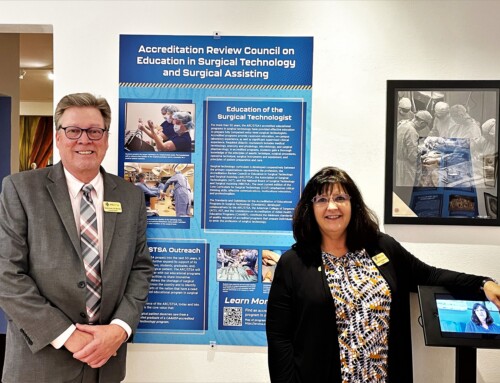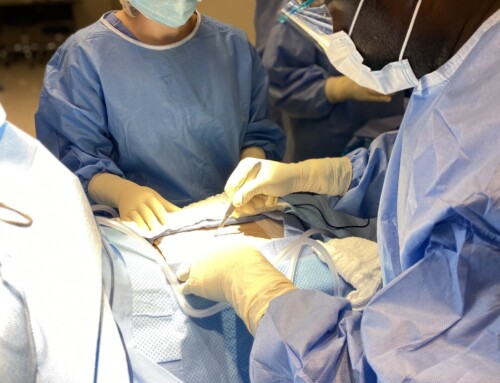By Jennifer Lloyd, BS, CST, Trine University
Zoom lectures due to COVID-19 — check!
24/7 student access to study rooms — check!
Virtual Site Visit — terrifying…or is it?
Our program recently underwent the ARC/STSA’s first Virtual Site Visit (VSV). While it was a bit daunting to think about how to share our program virtually, the whole experience was very positive.
Here are some things I learned throughout each part of the process that may help you, too:
- When you receive your instructions, do not panic. Although this is a new experience, the ARC/STSA wants to support us through this challenging time and they have done everything possible to make this a smooth process, providing clear details and instructions along the way. Take time to absorb this information so you feel prepared.
- If you are a paper person and your files are not already maintained digitally, you have a bit more work to do when it comes to preparing materials.
- You will need to scan all of your documents, which, for me, was very time consuming. Plan accordingly.
- I would recommend allowing at least two full work days for this. You are not only scanning, but also filing and organizing these documents for future use. Take this opportunity to do it in an organized fashion so you do not have to revisit this in the future.
- Good news: Uploading your documents to the ARC/STSA’s Google Drive (cloud-based file sharing platform) is extremely user-friendly!
- The ARC/STSA created an Electronic Resource Room for our program’s VSV for each standard, in order, and we just had to drop the appropriate documents into each folder.
- After uploading and depositing our documents and files, we reviewed them multiple times. With the amount of uploading, it was easy to make mistakes, such as putting a document into the wrong box. Pay close attention to this.
- Ask someone else to review your uploaded documents with you. A fresh set of eyes is helpful!
- Prepare for student participation in advance.
- If your students are participating remotely, ask them to do a test to ensure that they are able to access the virtual room. Our university usually uses Zoom, so we needed to make sure that students were able to access the GoToMeeting room.
- Communicate, communicate, communicate!
- Do not hesitate to contact your assigned ARC/STSA liaison. That was one of the first things that I did. Not only was she able to answer our questions, she was also a great, calming influence throughout the entire process.
We are all navigating this new COVID-19-induced virtual world and it is very important that we collaborate for the sake of our students. That said, this VSV allowed us to work with the ARC/STSA on a level that, for me, inspired great confidence. Not only did they quickly create an entirely new platform for site visits, they did so in a manner that was easy to navigate.
I would like to thank the ARC/STSA and the site visitors who are working very hard to support our programs and students. This visit was a testament to how we can all work together as a team to support our students, institutions and the profession of surgical technology!
“From our standpoint as a university, accreditation is important in that it proves that our program has met the standards, as set forth by the accrediting bodies, to provide a quality education for our students.
From a student standpoint, when choosing our program, accreditation ensures that they will receive a quality education that will help them be successful in the field of surgical technology.”



